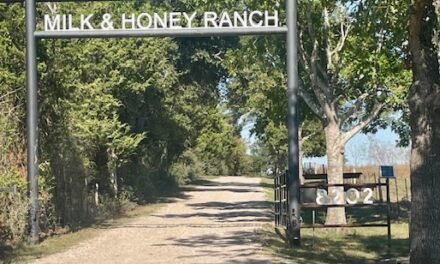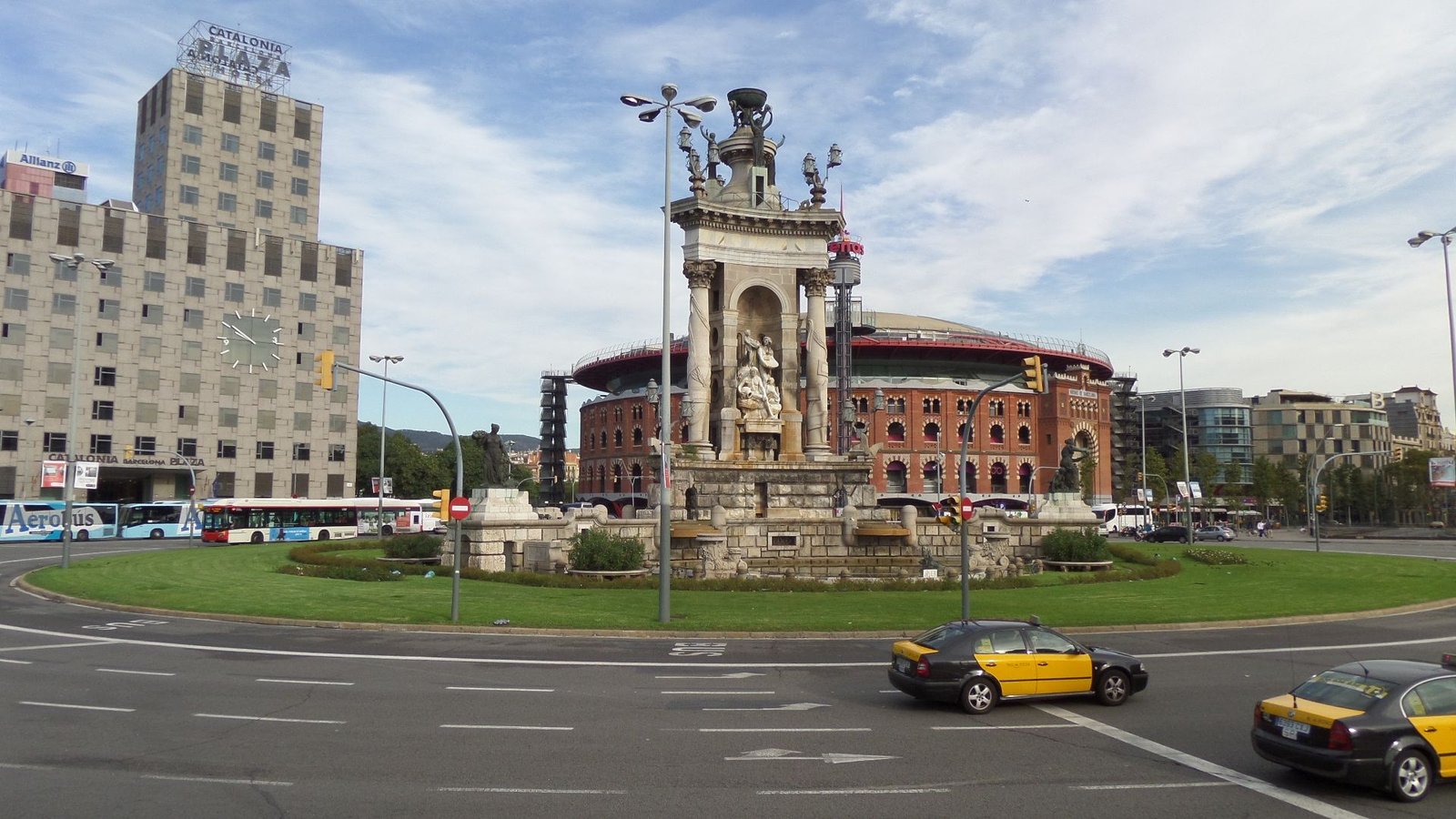
Monkeys and Macaws, Costa Rica Will Have You Howlin’
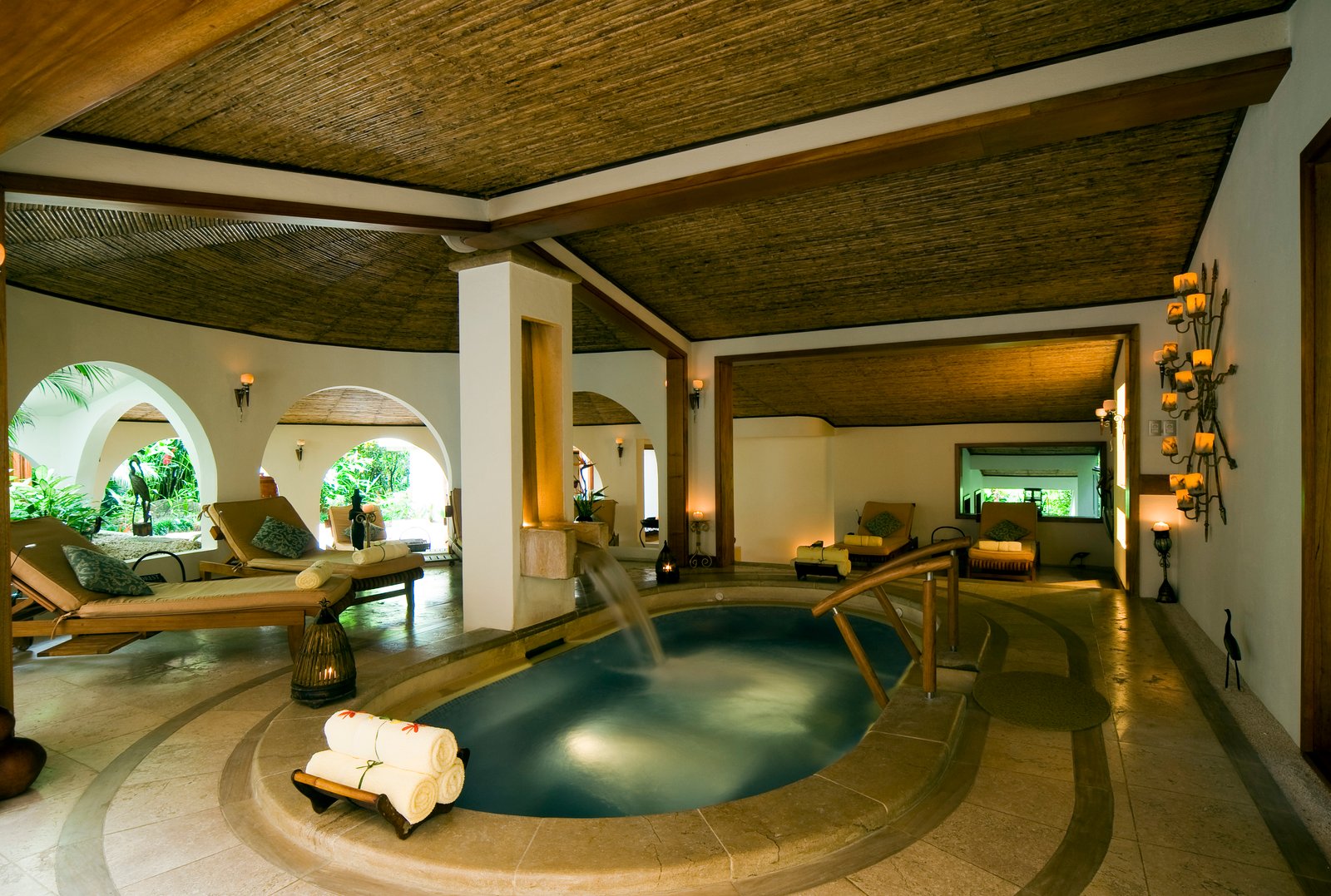
 I was off, on what was about to be the most exciting of all adventures. I was embarking on a trip to Costa Rica, a country considered small in size but abundant in unique wildlife and mouth-watering cuisine. Lucky for me, monkeys and food are two of my favorite things. So, my mission was in place: a quest to find the best vegetarian fare, while spotting the country’s indigenous primates during my wellness retreat.
I was off, on what was about to be the most exciting of all adventures. I was embarking on a trip to Costa Rica, a country considered small in size but abundant in unique wildlife and mouth-watering cuisine. Lucky for me, monkeys and food are two of my favorite things. So, my mission was in place: a quest to find the best vegetarian fare, while spotting the country’s indigenous primates during my wellness retreat.
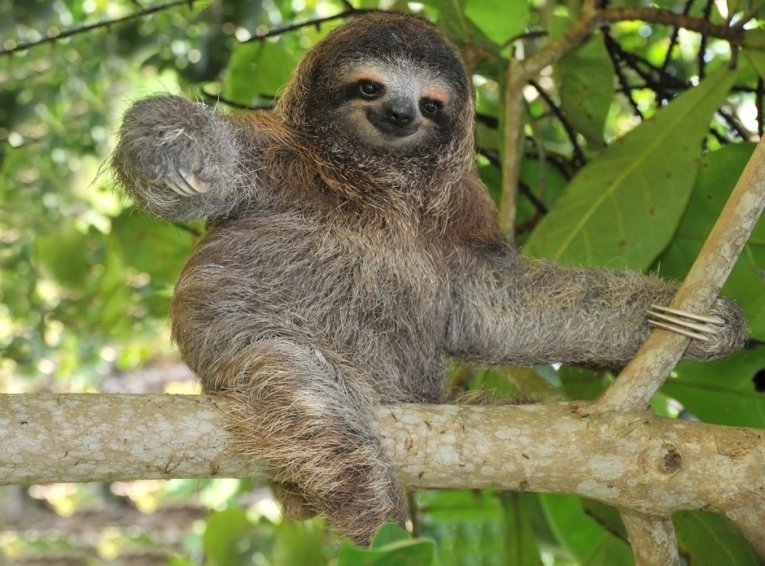 There is much to be said of the exotic wildlife in Costa Rica. Everywhere you look there is an abundance of monkeys, birds, butterflies, reptiles and amphibians. And then there’s the sloth. I had no clue what a sloth was until my guide showed me a picture of the three-toed smiling-looking creature on the Internet. I don’t quite know how to describe them, except to say they are interesting looking. After learning they are considered to be the world’s slowest mammal, I decided to put them on my must-see list, too. After all, if sloths are that slow, how hard can it be to spot one?
There is much to be said of the exotic wildlife in Costa Rica. Everywhere you look there is an abundance of monkeys, birds, butterflies, reptiles and amphibians. And then there’s the sloth. I had no clue what a sloth was until my guide showed me a picture of the three-toed smiling-looking creature on the Internet. I don’t quite know how to describe them, except to say they are interesting looking. After learning they are considered to be the world’s slowest mammal, I decided to put them on my must-see list, too. After all, if sloths are that slow, how hard can it be to spot one?
I love experiencing the true culture of a city, and since this was my first outing to Costa Rica, my initial stop was to a small, rural community called Bajos del Toro, which is approximately 90 minutes from the San Jose International Airport. It’s a thriving, yet relatively unknown tourist destination with lush landscapes, majestic waterfalls and abundant wildlife. Whether you’re looking for a peaceful place to unwind, or are an avid explorer, this is the place you’ll experience the true essence of Costa Rica.
 Eco-lodges are among my preferred places to stay, and El Silencio Lodge & Spa is one of my favorites. The breathtaking luxury eco-hotel in Bajos del Toro offers guests an array of adventures, educational sessions and relaxing activities. The lodge has only 16 suites and villas, each secluded and situated throughout the property. The rooms feature a private viewing deck with mountain or river views, handcrafted rocking chairs and a private outdoor Jacuzzi. The spacious rooms have floor-to-ceiling glass doors, as well as a selection of organic biodegradable personal care products. The beds have a cloud-top mattress so comfortable I almost slept through my next day’s activities. Although staying in bed might not have been such a bad idea, I would have missed the exciting things our eco-concierge had in store.
Eco-lodges are among my preferred places to stay, and El Silencio Lodge & Spa is one of my favorites. The breathtaking luxury eco-hotel in Bajos del Toro offers guests an array of adventures, educational sessions and relaxing activities. The lodge has only 16 suites and villas, each secluded and situated throughout the property. The rooms feature a private viewing deck with mountain or river views, handcrafted rocking chairs and a private outdoor Jacuzzi. The spacious rooms have floor-to-ceiling glass doors, as well as a selection of organic biodegradable personal care products. The beds have a cloud-top mattress so comfortable I almost slept through my next day’s activities. Although staying in bed might not have been such a bad idea, I would have missed the exciting things our eco-concierge had in store.
Rapelling and zip-lining enthusiasts and thrill-seekers are in for a treat at the El Silencio Lodge & Spa adventure park. The hotel’s 500-acre reserve also has numerous waterfalls, tree planting activities, wine and coffee tasting sessions, as well as hiking and bird-watching tails. There’s also a maze-like hummingbird path on the property with flowers and plants rich in nectar to attract the many friendly species of hummingbirds.
I was much too busy mapping out my sloth and monkey planning to prepare my own Costa Rican meal later that day. But for guests wishing to participate in a cooking lesson, the hotel provides opportunities to team up with their chef, picking organic vegetables and herbs from their on-property garden and then preparing a traditional Costa Rican meal.
If you prefer that the chef whip up one of his Caribbean creations instead, Las Ventanas restaurant, next to the lobby, offers an enticing menu, including vegetarian and gluten-free options – I was in luck! Their savory dishes contain local ingredients sourced from their organic mini-farm. Plantain chips were served as an appetizer, followed by a flavorful dish of rice and beans, baked plantains, a criolla salad (hearts of palm, purple cabbage and tomatoes), and picadillo chayote (sautéed chopped squash, carrots, beans, corn and red pepper).
Although still on a mission to find a howler monkey and sloth, I managed to take some time to visit the hotel’s “wellness sanctuary” for a memorable massage before departing.
 On the way to the next destination, our guide stopped at a local touristy spot, Restaurante Las Iguanas, where I was greeted by dozens of giant lizards – Texas-size! I’ve always liked reptiles but had never seen such enormous iguanas. They were fascinating and beautiful, and though they are said to be quite fast-moving on land, they patiently stood still while I photographed them. Unfortunately, the howler monkey I spotted shortly after we left the restaurant wasn’t so photogenic, so I was unable to fulfill my monkey mission – yet.
On the way to the next destination, our guide stopped at a local touristy spot, Restaurante Las Iguanas, where I was greeted by dozens of giant lizards – Texas-size! I’ve always liked reptiles but had never seen such enormous iguanas. They were fascinating and beautiful, and though they are said to be quite fast-moving on land, they patiently stood still while I photographed them. Unfortunately, the howler monkey I spotted shortly after we left the restaurant wasn’t so photogenic, so I was unable to fulfill my monkey mission – yet.
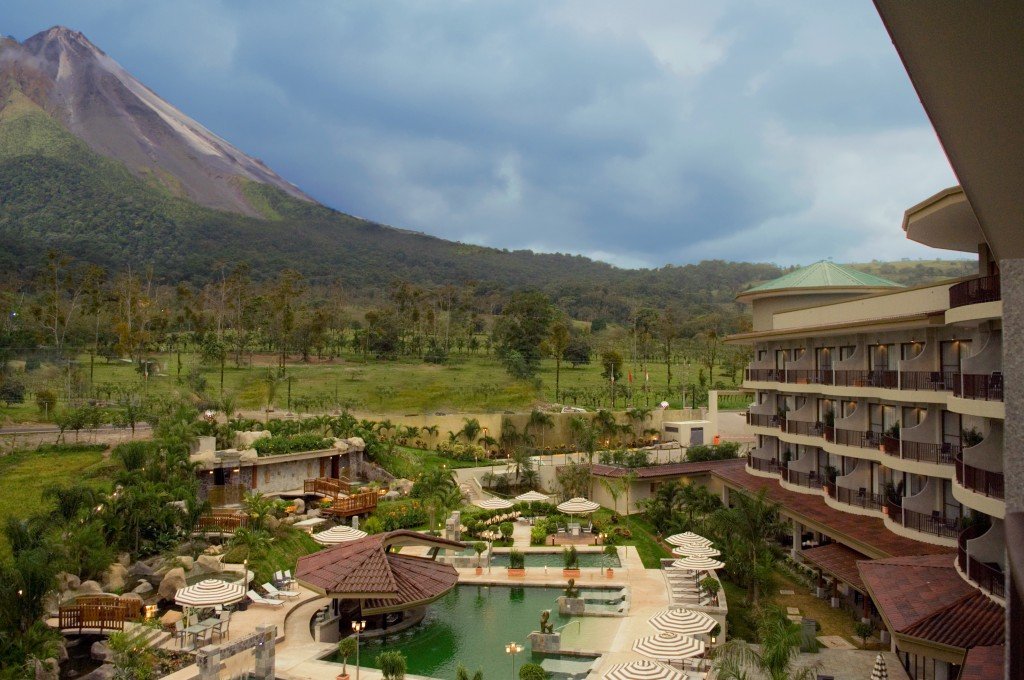 Next stop, the Royal Corin, a boutique luxury hotel located in the charming town of La Fortuna de San Carlos (about 49 miles from Bajos del Toro). The 54-room elegant resort and spa overlooks the Arenal Volcano and has three thermal pools on site and a swim-up bar. Their Restaurant Emperador served some excellent wine, including an Argentine Vida Orgánica 2013 Malbec. It’s bright purple in color, a nose of ripe red fruits with dark cherry on the palate, a bit spicy with a long finish. Probably not the best pairing with my tortilla soup and vegetable risotto, but I was nevertheless thrilled to have been introduced to it.
Next stop, the Royal Corin, a boutique luxury hotel located in the charming town of La Fortuna de San Carlos (about 49 miles from Bajos del Toro). The 54-room elegant resort and spa overlooks the Arenal Volcano and has three thermal pools on site and a swim-up bar. Their Restaurant Emperador served some excellent wine, including an Argentine Vida Orgánica 2013 Malbec. It’s bright purple in color, a nose of ripe red fruits with dark cherry on the palate, a bit spicy with a long finish. Probably not the best pairing with my tortilla soup and vegetable risotto, but I was nevertheless thrilled to have been introduced to it.
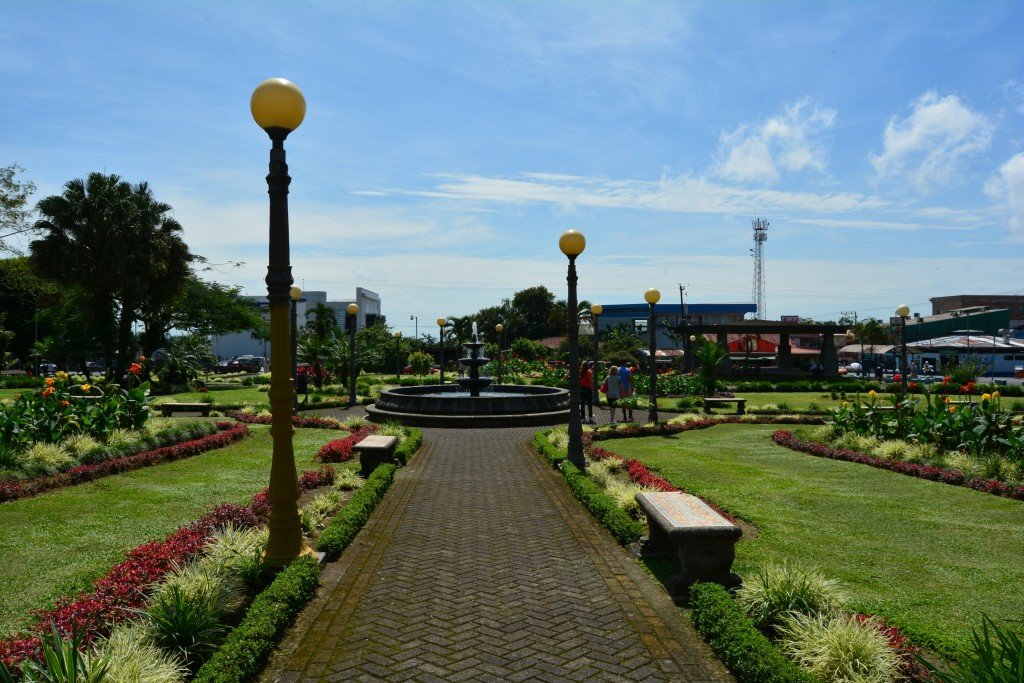 The town of La Fortuna is one of the main tourist destinations in Costa Rica — and in all of Central America. The major attraction is the Arenal Volcano, but the town is quite charismatic, full of restaurants, local artisan shops, exotic plants, and our good friend, the howler monkey.
The town of La Fortuna is one of the main tourist destinations in Costa Rica — and in all of Central America. The major attraction is the Arenal Volcano, but the town is quite charismatic, full of restaurants, local artisan shops, exotic plants, and our good friend, the howler monkey.
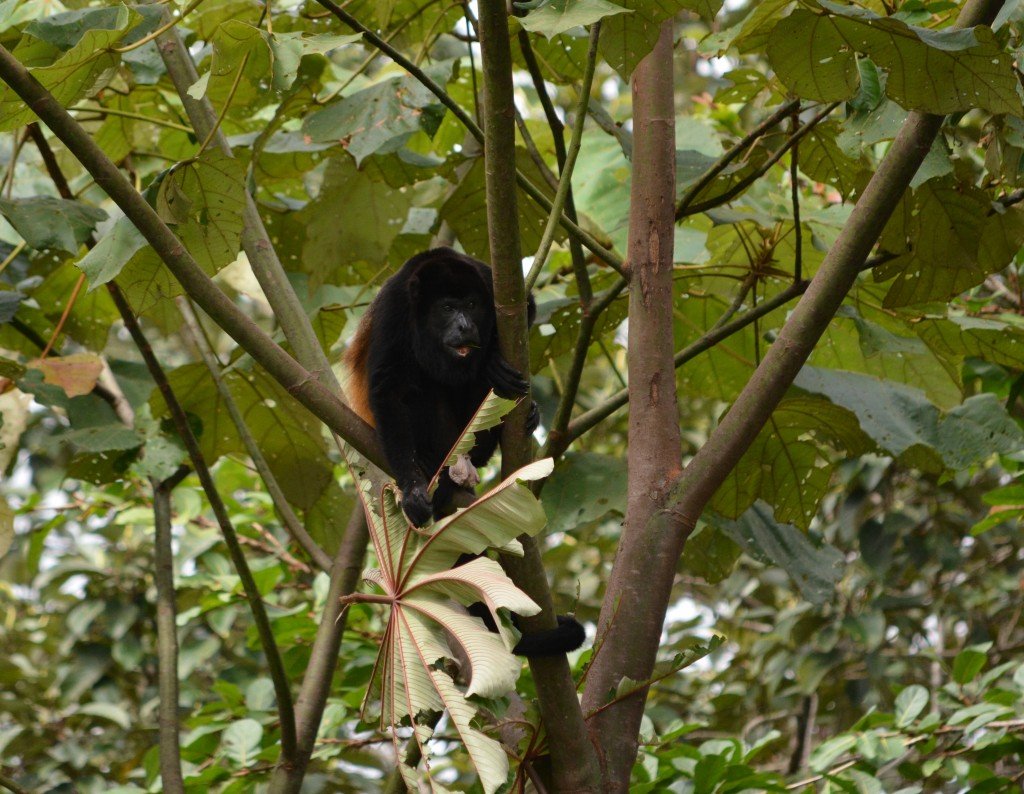 I’ve had a love for primates since I was young, but wasn’t too familiar with howler monkeys, who are indigenous to Central and South America (and on a similar diet as me). They are among the largest of the New World monkeys and are recognized by their loud howls (thanks to an impromptu howl from our local guide, the family of monkeys had a lot to say). Howler monkeys are also considered to be the loudest land animal and according to Guinness Book of World Records, their howls can be heard up to three miles away. Fortunately our tour guide didn’t have that same talent.
I’ve had a love for primates since I was young, but wasn’t too familiar with howler monkeys, who are indigenous to Central and South America (and on a similar diet as me). They are among the largest of the New World monkeys and are recognized by their loud howls (thanks to an impromptu howl from our local guide, the family of monkeys had a lot to say). Howler monkeys are also considered to be the loudest land animal and according to Guinness Book of World Records, their howls can be heard up to three miles away. Fortunately our tour guide didn’t have that same talent.
Making our way to the next destination, and still on the search for sloths, I was pleasantly surprised by a friendly little critter called a coati. They are noted to be in the raccoon family, typically weighing anywhere from 4-17 pounds. The coati is highly intelligent with a very long snout — and nicknamed “the hog-nosed raccoon.” Coatis communicate by chirping, snorting, or grunting sounds, and after a few grunts we parted ways.
 The Fortuna region is also home to some extraordinary sustainable farms. I visited Rancho Margot, a 400-acre, off- the-grid eco-lodge and education center located in heart of the rainforest. I was immediately greeted by the property’s golden retriever and ranch founder, Juan Sostheim, who led a two-hour guided ranch tour of the property. Sostheim is dedicated to sustainable production and education and eagerly spoke about sustainable farming, composting and creative recycling. “We like being able to say that we have no wires coming onto the Ranch. Our power is generated through hydroelectric turbines and is delivered through underground cables.” If you’re not an expert on sustainability when you arrive at the ranch, you will be by the time you leave.
The Fortuna region is also home to some extraordinary sustainable farms. I visited Rancho Margot, a 400-acre, off- the-grid eco-lodge and education center located in heart of the rainforest. I was immediately greeted by the property’s golden retriever and ranch founder, Juan Sostheim, who led a two-hour guided ranch tour of the property. Sostheim is dedicated to sustainable production and education and eagerly spoke about sustainable farming, composting and creative recycling. “We like being able to say that we have no wires coming onto the Ranch. Our power is generated through hydroelectric turbines and is delivered through underground cables.” If you’re not an expert on sustainability when you arrive at the ranch, you will be by the time you leave.
The pristine 40-room boutique lodge offers farm-to-table cuisine, yoga classes (including a 200-hour certified yoga teacher training course), as well as bird-watching tours throughout their botanical gardens where you’ll experience one of the greatest variety and density of birds in Costa Rica, including the brilliantly colored Macaw (a member of the parrot family).
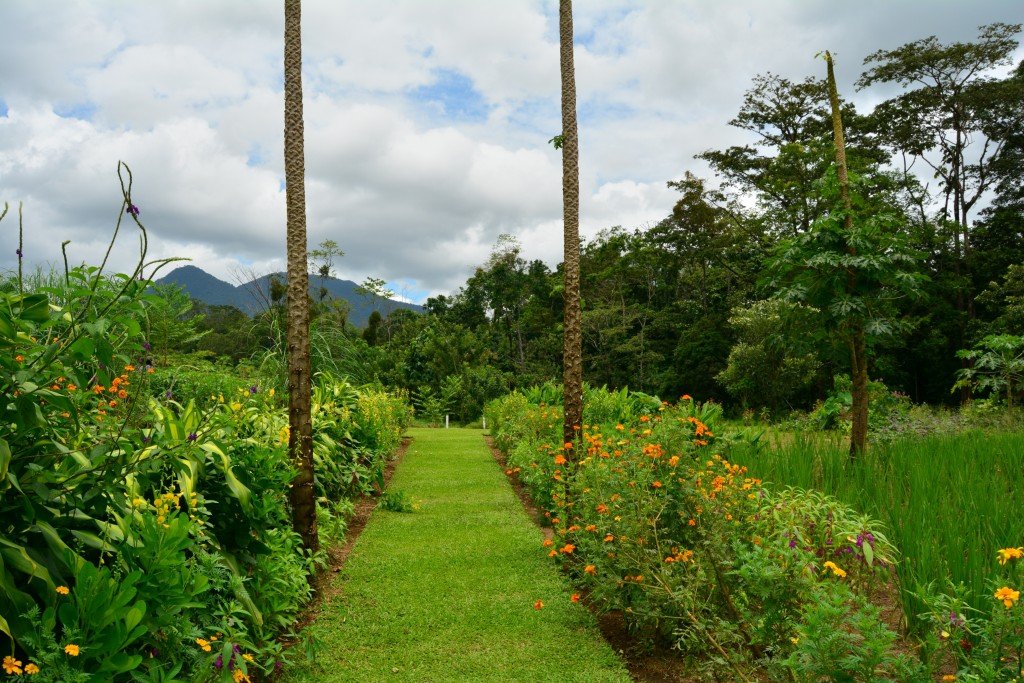 The second eco-center I visited is Finca Educativa Don Juan, a smaller 2.5 acre ranch positioned at the foot of the Arenal Volcano. They harvest over 50 organic crops on the property, a few of which I was able to taste during the tour. Our experienced and entertaining guide explained the cultivation methods on the ranch as I explored the rest of the property, which was flourishing with butterflies and birds, and, as far as I could find, one very stunning and colorful toucan.
The second eco-center I visited is Finca Educativa Don Juan, a smaller 2.5 acre ranch positioned at the foot of the Arenal Volcano. They harvest over 50 organic crops on the property, a few of which I was able to taste during the tour. Our experienced and entertaining guide explained the cultivation methods on the ranch as I explored the rest of the property, which was flourishing with butterflies and birds, and, as far as I could find, one very stunning and colorful toucan.
La Fortuna is full of surprises, and nestled in the middle of the rainforest at the Arenal Volcano National Park is Tabacon Grand Spa Thermal Resort, one of the top resorts in Costa Rica, where I was welcomed with a drink and an impressive tour of the magical resort.
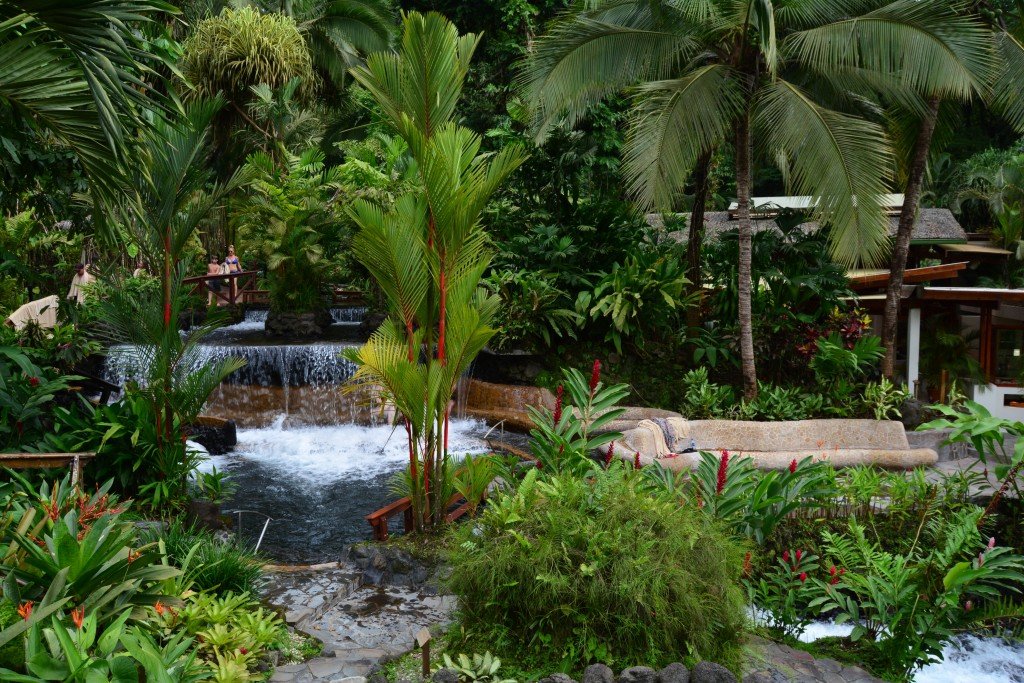 The eco-friendly, carbon-neutral resort and spa has received countess awards from numerous publications over the years, including Travel + Leisure, Condé Nast Traveler, Organic Spa Magazine and National Geographic. While there are many naturally occurring hot springs around the globe linked with volcanic activity – and hot springs of different temperatures, flow volume and mineral content throughout Costa Rica – Tabacon Grand Spa Thermal Resort is the only one that offers the perfect combination of these three elements, making the resort unique worldwide. The five-star property has five naturally occurring thermal springs, with temperatures ranging from 77 to 122 degrees Fahrenheit, as well as two main branches to the thermal river that flow through the gardens, and one cold river spring that flows down from the rainforest.
The eco-friendly, carbon-neutral resort and spa has received countess awards from numerous publications over the years, including Travel + Leisure, Condé Nast Traveler, Organic Spa Magazine and National Geographic. While there are many naturally occurring hot springs around the globe linked with volcanic activity – and hot springs of different temperatures, flow volume and mineral content throughout Costa Rica – Tabacon Grand Spa Thermal Resort is the only one that offers the perfect combination of these three elements, making the resort unique worldwide. The five-star property has five naturally occurring thermal springs, with temperatures ranging from 77 to 122 degrees Fahrenheit, as well as two main branches to the thermal river that flow through the gardens, and one cold river spring that flows down from the rainforest.
 After a dip in two thermal springs, I decided to pamper myself at The Grand Spa (located in a private area of the gardens) where I had the option of resting in their relaxation area with a fruit smoothie or unwinding in the hydrotherapy pool or co-ed Jacuzzi before my massage.
After a dip in two thermal springs, I decided to pamper myself at The Grand Spa (located in a private area of the gardens) where I had the option of resting in their relaxation area with a fruit smoothie or unwinding in the hydrotherapy pool or co-ed Jacuzzi before my massage.
 All treatments at The Grand Spa take place in their outdoor bungalows, made of palm leaves, caña brava (a local wild shrub similar to bamboo), and local wood. Whether you prefer a Volcanic Mud Wrap, Chocolate Joy Exfoliation or Shirodhara massage, the open-air bungalows allow you to experience your therapy among fresh air from the rainforest and soothing sounds from the hot springs and wildlife at the resort.
All treatments at The Grand Spa take place in their outdoor bungalows, made of palm leaves, caña brava (a local wild shrub similar to bamboo), and local wood. Whether you prefer a Volcanic Mud Wrap, Chocolate Joy Exfoliation or Shirodhara massage, the open-air bungalows allow you to experience your therapy among fresh air from the rainforest and soothing sounds from the hot springs and wildlife at the resort.
Traveling to a paradise destination can be quite exhausting, so by the last night of my trip I couldn’t wait to sink into bed at Aloft San Jose. The swanky hotel sits in San Jose’s trendiest neighborhood, just 10 minutes from Escazú, a great little area for shopping, restaurants and nightlife, and just six miles from the Juan Santamaria International Airport.
 But sleeping apparently wasn’t on my agenda, as there were several areas of the hotel I couldn’t wait to check out first. The contemporary Re:mix lounge, a trendy hangout for mingling, playing pool or listening to the DJ and Re:fuel, the 24-hour go-to escape for late night snacks, espresso or tea cravings. The vibrant W XYZ Bar is the perfect spot for specialty cocktails, fine wines and savory bites. I happened to be there during Sangria Thursday, but the fashionable bar offers specials five nights a week.
But sleeping apparently wasn’t on my agenda, as there were several areas of the hotel I couldn’t wait to check out first. The contemporary Re:mix lounge, a trendy hangout for mingling, playing pool or listening to the DJ and Re:fuel, the 24-hour go-to escape for late night snacks, espresso or tea cravings. The vibrant W XYZ Bar is the perfect spot for specialty cocktails, fine wines and savory bites. I happened to be there during Sangria Thursday, but the fashionable bar offers specials five nights a week.
Morning came much too quickly, and I was sad to say goodbye to Costa Rica. On our way to the airport, I noticed a fast food sign that read, “breakfast, lunch, seafood, shrimp.” We suddenly came to a stop at Rancho Mi Tata, a local restaurant that had outside tables of pineapples, bananas, mangos, caimitos (Costa Rican star apples), granadilla (passion fruit), mombín (plums), marañons (fruit from a cashew tree), pejibaye (vegetable resembling an acorn), and my favorite fruit, the exotic rambutan (sometimes called “hairy lychees”).
Rancho Mi Tata wasn’t on the itinerary, and I wasn’t sure why we were there since it was a bit out of the way to the airport. But it was a cool little spot with local fruits and vegetables for sale. After a few moments of standing around, I noticed our guide motioning me over to a gated area. It was at this moment I realized we weren’t at Rancho Mi Tata for the food after all. We were there — in search of sloths!
With intense anticipation, we walked into the property. It wasn’t long before we spotted a mother and baby sloth high up in one of the trees. They weren’t easy to photograph as they were hidden by the leaves, but we watched them for a bit so I could have my fill of sloths before heading back home.
Sloths have a difficult time walking due to their long claws, so they spend most of their time staying in tall trees, crawling down only once a week for a restroom break. They are such interesting animals, and due to the shape of their mouths they always appear to be smiling. I was smiling, too, all the way to the airport, as I had fulfilled my monkey and sloth sightings on my last day in Costa Rica.


